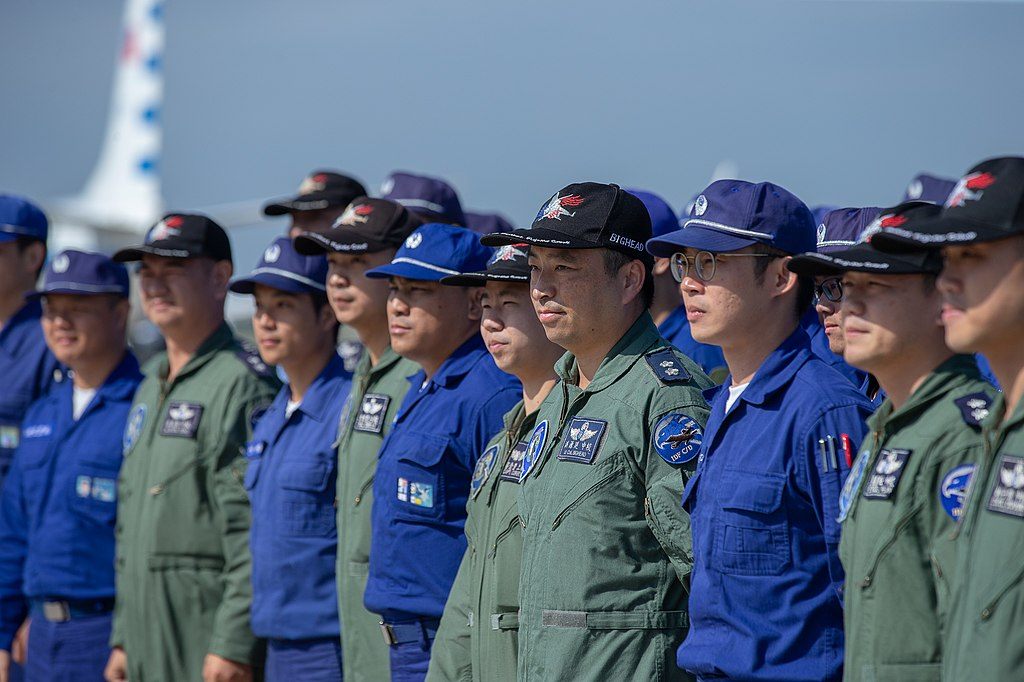Securing Taiwan’s Satellite Infrastructure Against China’s Reach

Published by The Lawfare Institute
in Cooperation With

According to the Space Threat Assessment report, published by the Center for Strategic and International Studies in April 2023, “As part of a military strike on Taiwan, China would probably jam communications and intelligence satellites, degrade or destroy space ground networks and destroy ballistic missile early warning satellites.” Furthermore, according to a U.S. intelligence report leaked earlier this year, China is “building sophisticated cyber weapons to ‘seize control’ of enemy satellites, rendering them useless for data signals or surveillance during wartime.”
The expansion of space-based technologies and the proliferation of interconnected systems have opened the door to a wide array of cyber threats. Malicious actors can exploit vulnerabilities within space systems—aiming to disrupt communication, compromise satellites, or even weaponize space assets. Additionally, the advent of artificial intelligence (AI) technologies introduces new dimensions of risk, including the potential for AI-driven cyberattacks or the exploitation of AI algorithms within space systems.
These challenges are even more acute during wartime, as revealed by the Russian cyberattack against the Viasat satellite communication network terminals on the first day of its 2022 invasion of Ukraine. As the possibility of a Chinese invasion of Taiwan continues to loom, it is important to address the cyber threat China poses to Taiwan’s space-based infrastructure and how Taiwan is preparing to counter it.
Cyber Threats to Space Systems: China’s Capabilities
China has made significant advances in its space technology, including the development of space lasers, on-orbit proximity capabilities (rendezvous and proximity operations), and anti-satellite missiles. The People’s Liberation Army (PLA) also continues to obtain and advance an array of counterspace capabilities and associated technologies. These include kinetic-kill missiles, ground-based laser systems, orbiting space robots, and an expansion of its space surveillance capacity. It has also successfully penetrated U.S. and other Western aerospace companies and damaged satellite networks by conducting offensive cyber operations. This is a worrying trend for the United States and other countries China could attack, as these countries depend on space systems and internet infrastructure for communication and everyday life. According to the U.S. Department of Defense’s annual report on the People’s Republic of China (PRC), the “PLA views space superiority, the ability to control the space-enabled information sphere and to deny adversaries their own space-based information gathering and communication capabilities, as critical components to conduct modern ‘informatized warfare.’”
Regarding offensive cyber capabilities, the report underscores the PRC’s progression in cyberspace attacks, including the capacity to disrupt U.S. infrastructure, like natural gas pipelines, for extended durations. The PRC poses a persistent and sophisticated cyber threat—as it conducts espionage and attacks on military and critical infrastructure systems that seek to obtain information and technologies through these offensive cyber operations.
China is also using sophisticated techniques to breach space-system defenses, including social engineering, advanced malware, and supply-chain attacks. In December 2018, the U.S. Department of Justice charged two Chinese hackers for these cyberattacks specifically for stealing intellectual property and confidential business information. Among those targeted were companies involved in space technology—such as seven companies involved in space, satellites, aviation, the NASA Goddard Space Center, and the Jet Propulsion Laboratory. These hackers, who are part of the Chinese APT10 hacking group, have allegedly targeted a range of entities in the U.S., Britain, Australia, and New Zealand.
China is a very capable actor both in cyber and space domains, and the intersection between them. As a result, it is very likely to employ these capabilities in a future conflict with Taiwan.
Taiwanese Defense
Taiwanese authorities say the country experiences 20 to 40 million Chinese cyberattacks each month, and the country’s evolving space sector is vulnerable. In a world where connectivity is paramount, the undersea cables that link Taiwan to the global internet is an Achilles heel that cannot be ignored. These vital communication channels are not only essential for the daily functioning of the island but also play a critical role in national security—as they ensure swift and reliable information exchange and enable the government and military to respond effectively to emerging threats.
Recognizing the vulnerability of these undersea cables, Taiwan has embarked on a mission to secure its communication satellites. Kenny Huang, CEO of the Taiwan Network Information Center, echoes the urgency of this endeavor: “If you asked me about using satellites last year, I’d say it’s impossible,” he remarked. “But after we learned from the lesson of the Ukraine war, I’d say we need to make the impossible possible.”
Huang’s sentiment resonates loudly in the context of a possible Chinese invasion of Taiwan. As tensions persist and the threat of cyberattacks looms large, Taiwan’s quest to fortify its satellite communication capabilities may prove critical to safeguard its sovereignty. Taiwan still faces challenges in countering China’s cyber threats, such as insufficient resources and personnel, legal and regulatory obstacles, and difficult strategic and ethical issues inherent to cyber conflict in space.
In December 2022, the Taiwan Space Agency unveiled its ambitious plan to initiate a dedicated low-Earth orbit (LEO) satellite communications project. The project is inspired by the role Elon Musk’s Starlink has played in the war in Ukraine and is part of Taiwan’s broader efforts to build a communications infrastructure that could survive an attack from China. Distinct from traditional government programs, this groundbreaking project is structured as a privately operated venture, wherein the Taiwanese government would retain a substantial minority ownership. Last year, the Taiwan Space Agency completed the initial systems review of the B5G project and expects to complete a review of a design model by the end of 2023. This project intends to enhance the Taiwan Space Agency’s initial proposal for two government-built LEO satellites by evolving it into a “2+4” configuration. This will involve constructing four additional satellites through collaborative efforts between the public and private sectors.
These are critical strategic steps toward bolstering Taiwan’s self-reliance and ensuring a sovereign capability to maintain independent communication channels in the event of a potential Chinese invasion. According to Audrey Tang, Taiwan’s digital minister: “We look at the Russian invasion of Ukraine and how Starlink has been used very successfully,” and “[o]ur primary concern ... is facilitating the societal resilience, to make sure for example that journalists can send videos to ... international viewers even during a large-scale disaster.”
Taiwan is also working closely with the U.S. in cyber defense cooperation. In April 2023, U.S. lawmakers introduced the Taiwan Cybersecurity Resiliency Act, which would require the U.S. Department of Defense to expand cybersecurity cooperation with Taiwan to help it counter cyber threats from China. This will include cybersecurity training exercises with Taiwan; efforts to defend Taiwan’s military networks, infrastructure, and systems; and a reaffirmed focus on leveraging U.S. cybersecurity technologies to help defend Taiwan.
In a speech at Carnegie Mellon University in February, Jen Easterly, the director of the U.S. Cybersecurity and Infrastructure Security Agency, suggested that a Chinese invasion of Taiwan could be accompanied by multiple cyber incidents—including sabotaging U.S. gas pipelines, contaminating water systems, seizing control of telecommunications networks, and disrupting transportation hubs. These actions would aim to create chaos and panic, hindering the U.S.’s ability to mobilize military forces and maintain public morale. Easterly emphasized that such a scenario, though concerning, is preventable through collective efforts across the nation, involving businesses and universities, to bolster the safety, security, and resilience of American infrastructure.
Conclusion
The intersection of space and cybersecurity is becoming increasingly important as nations increase their investments in space capabilities and technology advances. AI technologies are enhancing the scale and scope of these threats. As the possibility of a Chinese invasion of Taiwan remains on the horizon, cyber threats to space systems become increasingly threatening. The potential risks associated with these dangers must not be underestimated. Taiwan is already working to reduce its dependency on undersea cables by developing satellite communication solutions—likely similar to what SpaceX has provided Ukraine in its fight against Russia. It seems that Taiwan is implementing the lessons learned from the Russian cyberattack on the Viasat terminal and is considering a wide range of defensive measures. The U.S. is already working with Taiwan to enhance its cyber defenses and preparedness, and defending its space systems should be a part of these efforts.


.jpg?sfvrsn=82a6ee72_5)


